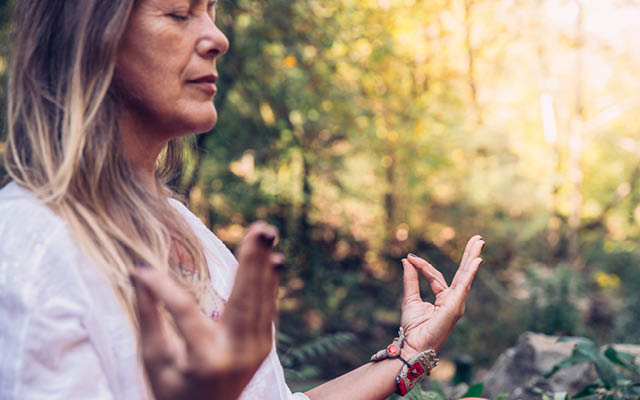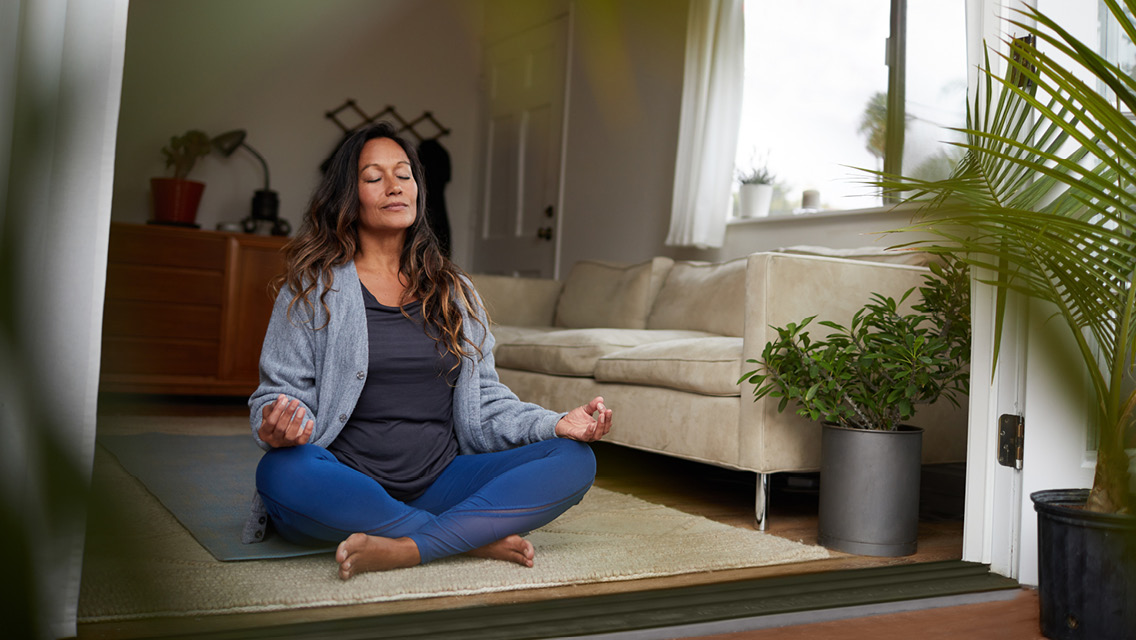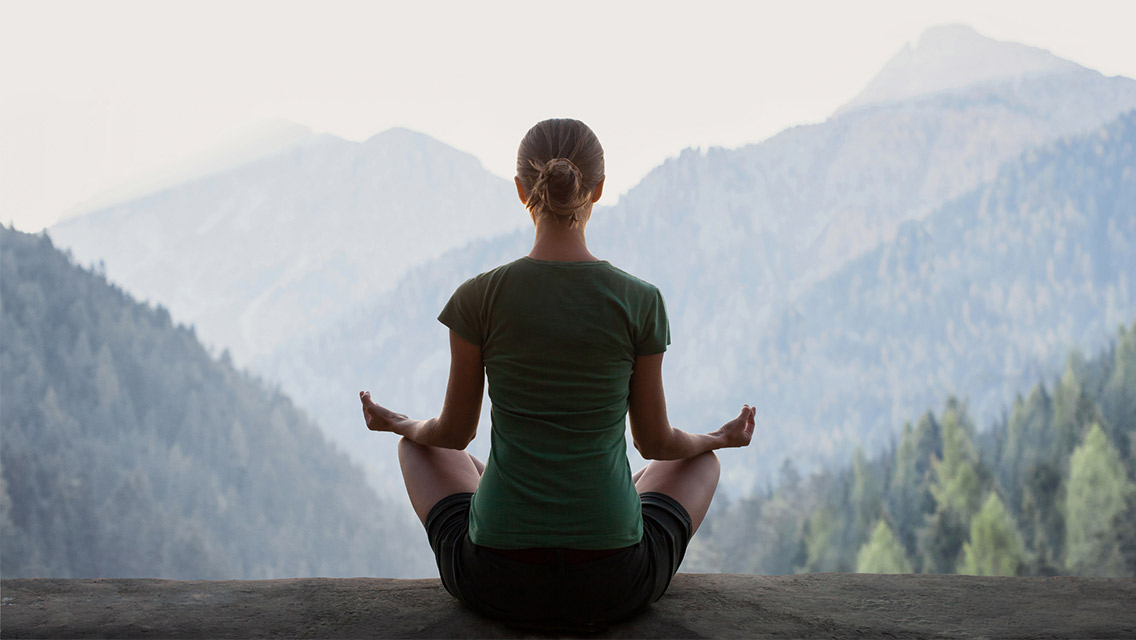Diana Winston remembers feeling a fleeting moment of joy as a 14-year-old after an exhausting week of work as a mother’s helper chasing two young children.
“I remember one night escaping into the field in front of the beach cottage, lying down on a blanket, and looking up at the vast, star-strewn night sky. I let myself fully relax,” she says. “Without any forewarning, I started to experience a combination of awe and love. In a wave that came over me, I had a sense of being both fully inside my body and as spacious as the sky.”
That feeling didn’t return until she discovered Tibetan Buddhist meditation during a postcollege tour around India and began practicing it on retreats throughout Asia. When a Burmese meditation teacher invited her to practice with him at a monastery, she accepted.
“I was very driven,” Winston says. “I wanted to get an A in meditation.” So she put her possessions in storage, shaved her head, and dived into mindfulness meditation boot-camp-style, as an ordained nun.
“You get up in the morning and meditate until breakfast, and then you do sitting meditation, and walking meditation, and sitting meditation, and then you have lunch, and then you don’t eat until the next morning, because you’re only allowed to eat up until 12 noon,” she recalls.
She maintained the regimen — even skipping sleep in order to sit more — despite illness and a growing sense of isolation. “I kept thinking that if I reached some kind of awakening through meditating, I’d be happy,” she says. “Eventually, I fell apart and told my teacher I was going to quit.”
Instead of quitting, though, Winston found a new direction in a book of Tibetan Buddhist teachings. “It basically said that there’s no need to try so hard, there’s nowhere to go, there’s nothing to get; awareness is always here, our minds are pure and luminous and awake, and we can hold that perspective instead of working so hard,” she explains.
“I began practicing without a meditation goal, and I found a sense of wakefulness that was already naturally present. So that’s what I began to explore.”
Winston is now the director of mindfulness education at the UCLA Mindful Awareness Research Center and has spent the past 20 years helping fellow meditation students discover that natural awareness. She recently outlined her practices in The Little Book of Being: Practices and Guidance for Uncovering Your Natural Awareness.
Experience Life | What is natural awareness?
Diana Winston | There are two ways to look at it. The first is a state that I’ve found many people can recognize. For example, it’s if you’ve ever had a moment where you’re sitting and watching the clouds and a sense of ease comes over you. Or maybe you’re with your pet, out in nature, or in the midst of athletic activity and you get this sense of deep relaxation, peace, connection, love, or joy.
We don’t feel it often or access it a lot because we’re so distracted with our phones or busy in our lives. But when we allow ourselves to rest in our own sense of being, there’s a profound wellness that happens — this is our natural awareness.
It’s part of what it means to be human. It’s part of our birthright that our mind has the capacity to rest in its own sense of goodness and well-being. So, when you’re looking at the clouds, and you’re just there, you’re in that territory.
The other way is to use the deliberate tools that can help you access natural awareness at any time once you’ve got some basic meditation practice under your belt. For instance, it’s like understanding how to bring your attention back to your breathing when your mind is jumping around like a monkey.
EL | Can you offer an example of what you call “glimpse practices” and explain how they work?
DW | So much of our lives is inward-focused and kind of minute. Even during meditation, we’re looking at our breathing in a close-in way. But our awareness is like a camera with both telephoto and panoramic lenses.
Glimpse practices help people expand their awareness outward by breaking up inward-focusing habits to allow for feeling more open, spacious, and relaxed, which are qualities of natural awareness. For example, once you’ve concentrated your mind a bit, you can drop a question into your mind, such as What would be here if nothing was wrong? or Who would be here if you didn’t have a problem to solve?
They’re not meant for you to analyze or ruminate on. Rather, they’re for you to simply drop into your receptive mind — like dropping a pebble into a pond and paying attention to the ripples. Listen deeply and see what emerges.
EL | How has connecting with natural awareness helped you?
DW | I liken it to there being this radio station that’s blaring natural awareness, but I was always tuning the dial over to KPF-Anger and WNY-Judgment. So, natural awareness is really about learning to stop identifying so much with the “I’m angry, I’m judgmental, there’s something wrong with me” and tuning in to the natural-awareness station that’s always been here.
Connecting to a place of natural awareness more often has helped me shift away from having a mind lost in thought to having a mind resting in awareness.
It’s resulted in living in a place of more ease, having more lovingness toward myself instead of criticism and judgment, having more compassion toward others, and finding more beautiful states of mind to experience.




This Post Has 0 Comments